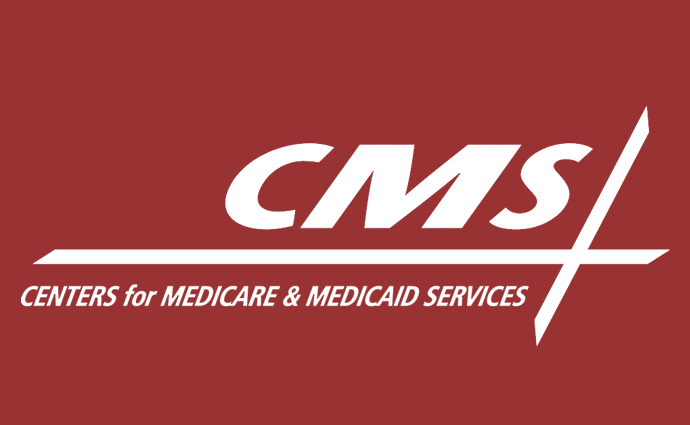CMS to Extend Healthcare Price Transparency to Prescription Drugs
Drug manufacturers may have to start listing prescription drug prices in TV ads, according to a newly proposed healthcare price transparency rule from CMS.

Source: Xtelligent Healthcare Media
- CMS is attempting to extend healthcare price transparency to prescription drugs. According to a recently proposed rule, drug manufacturers may have to start including the list price for the medications they advertise on television.
As part of its efforts to lower prescription drug costs and healthcare spending, the federal agency proposed to require drug manufacturers to post the wholesale acquisition cost (WAC) for drugs covered in Medicare and Medicaid in direct-to-consumer television ads.
“This historic proposal is an important way to create new incentives for drug companies to start lowering their list prices, rather than raising them,” HHS Secretary Alex Azar stated in a press release. “President Trump’s drug-pricing blueprint called for HHS to consider how to accomplish this goal, and now we are following through on this measure to better inform patients, help them lower their drug costs, and reduce unreasonable spending in Medicare and Medicaid.”
Under the proposed rule, drug manufacturers would need to post the price for a typical course of treatment for an acute medication, such as an antibiotic, or a 30-day supply of medication for a chronic condition.
The prescription drug price would be included in the text statement included at the end of the ads.
READ MORE: 4 Strategies for Providers to Improve Hospital Price Transparency
CMS noted that medications with WACs of less than $35 per month would be excluded from the drug price transparency rule.
The HHS Secretary would also keep a public list of drugs that manufacturers advertised but did not post the price for in the ad, the proposed rule added.
“President Trump and Secretary Azar are working tirelessly to bring down prescription drug prices, and today CMS is continuing to execute on the President's blueprint,” CMS Administrator Seema Verma said in the press release. “We are committed to price transparency across-the-board, and prescription drugs are no different.”
“Patients often pay their cost-sharing or deductible off of a drug’s list price,” she continued. “Today’s proposed rule would ensure that those list prices are included in television advertisements, so patients have the information they need to make informed decisions.”
The proposed drug price transparency rule comes at a time when patients have more financial responsibility when it comes to their healthcare.
READ MORE: Prescription Drug Rates Remain Top Healthcare Supply Chain Issue
HHS reported that 47 percent of Americans have a high-deductible health plan, meaning they will pay the full price for prescription drugs until they meet their deductible and their health insurance kicks in.
Uninsured individuals also pay full price for prescription drugs, HHS pointed out.
For these patient populations, knowing the WAC of a prescription drug will prevent “sticker shock” when consumers purchase medications.
HHS and its agencies intend for the proposed drug price transparency rule to help lower prescription drug prices, as well as Medicare and Medicaid spending on medications. The rule could also bolster competition, which would help to drive down prescription drug rates.
The American Medical Association (AMA) is calling the proposed rule “a step in the right direction” for lowering prescription drug spending and supporting consumers.
READ MORE: Target Prices to Control Prescription Drug Spending, AHA Advises
“Although the American Medical Association is opposed to direct-to-consumer advertising of prescription drugs, as long as the practice is allowed, the ads should come with at least a small dose of transparency,” Barbara L. McAneny, MD, AMA’s President, said in a statement on the proposed rule.
“Last year, the AMA called for regulations requiring the ads to include the manufacturer’s suggested retail price of those drugs, and we supported similar legislative efforts by Senators Grassley and Durbin earlier this year,” she continued. “While this proposed rule alone won’t remove the often-misleading nature of prescription drug ads, it will give consumers a data point that is currently unavailable.”
The proposed rule may bring healthcare price transparency to prescription drugs. But not all healthcare stakeholders are convinced that giving consumers wholesale costs of drugs will help them make informed healthcare decisions.
Consumers do not always pay the full price for prescription drugs because of their insurance plans. Actual out-of-pocket costs for consumers are typically based on a share of the list price.
Some critics of the proposed rule argue that the posting of WACs for prescription drugs in direct-to-consumer advertisements would be confusing for patients and might possibly lead to forgoing of treatment or medication non-adherence.
One such industry group opposing the proposed rule is the Pharmaceutical Research and Manufacturers of America (PhRMA).`
“PhRMA remains concerned that just including list prices in these advertisements is not sufficient and could discourage patients from seeking needed medical care,” group wrote in a statement. “List prices are not a good indicator of what a patient will pay at the pharmacy counter and do not reflect the substantial discounts and rebates negotiated by insurers and pharmacy benefit managers.”
CMS opened a comment period for the proposed rule. Stakeholders have until Dec. 17, 2018 to submit comments to CMS.
